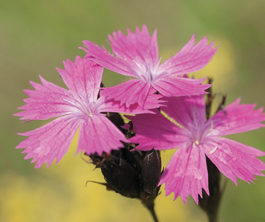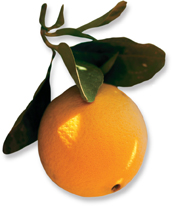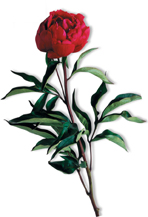EUDICOTS: “TRUE DICOTS”
Eudicots (YOO dy kahts) account for about 75 percent of all angiosperm species. The name means “true dicots,” and these plants are the ones usually given as examples of dicot stem, leaf, and flower structure. Eudicots have distinctive pollen grains with three grooves on their surfaces, and DNA studies strongly support their classification in a single group. They include a number of important subgroups, five of which are described here.
Ranunculales
The ranunculales subgroup (ruh NUNH kyu lay les) includes, and is named after, buttercups (genus Ranunculus). Also included in this subgroup are a number of well-known flowers such as columbines, poppies, barberries, and moonseed.

Rocky Mountain Columbine
Caryophyllales
Cacti are probably the most well-known plants in the caryophyllales subgroup (KAR ee oh fy lay les). Pinks and carnations, spinach, rhubarb, and insect-eating plants, such as sundews and pitcher plants, are also members.

Clusterhead Pinks
Rosids
The rosids include, as you might expect, the roses. However, this subgroup also includes many popular fruits, such as oranges, raspberries, strawberries, and apples. Some of the best-known trees, including poplars, willows, and maples, are also members.

Orange
Saxifragales
Plants in the saxifragales (SAK suh frij ay les) subgroup include peonies, witch hazel, gooseberries, and coral bells.

Peony
Asterids
The nearly 80,000 asterid species include sunflowers, azaleas, snapdragons, blueberries, tomatoes, and potatoes.

The flower heads in a field of sunflowers all track the sun as it moves across the sky; thus, they all face the same direction.
Table of Contents
- Formulas and Equations
- Applying Formulas and Equations
- Mean, Median, and Mode
- Estimation
- Using Measurements in Calculations
- Effects of Measurement Errors
- Accuracy
- Precision
- Comparing Accuracy and Precision
- Significant Figures
- Calculating With Significant Figures
- Scientific Notation
- Calculating With Scientific Notation
- Dimensional Analysis
- Applying Dimensional Analysis




